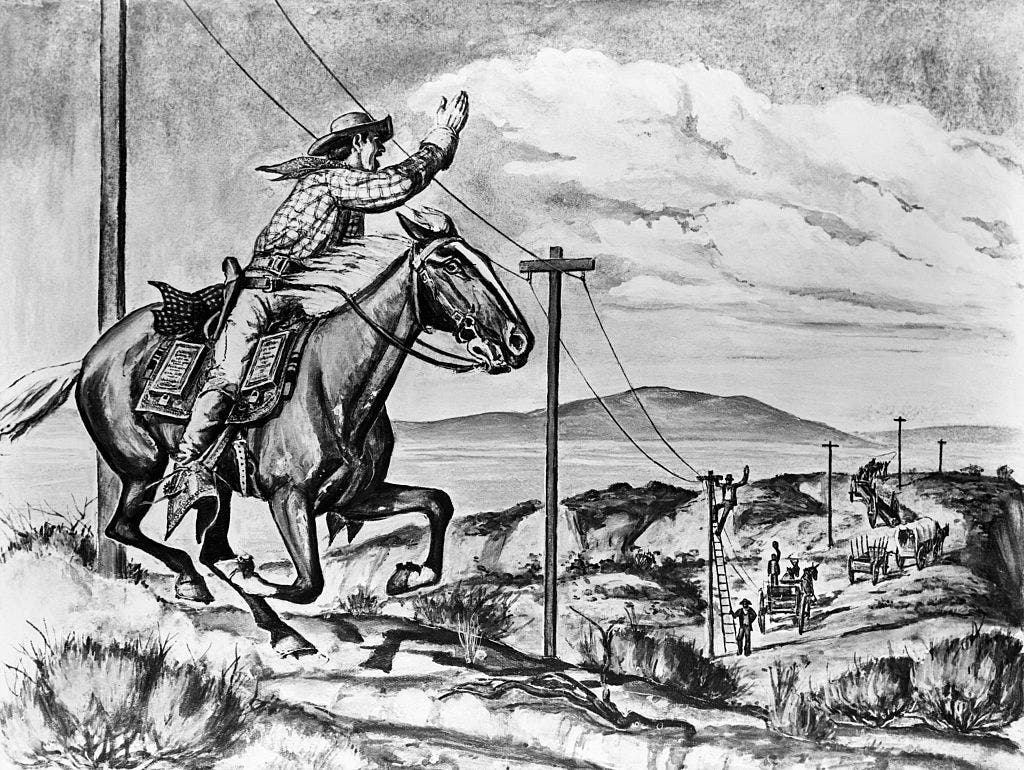In 1861, Western Union completed the transcontinental telegraph, connecting the Atlantic and Pacific oceans for the first time. The completion of this project came at a time when the Civil War was tearing the nation apart, and it was seen as a way to strengthen the bonds between the east and west coasts. This technological advancement, spearheaded by inventor Samuel F.B. Morse, marked the end of the Pony Express, which had previously been the fastest means of transcontinental communication. Just two days after the telegraph was completed, the Pony Express officially closed, having been in operation for only 18 months.
The push to create a transcontinental telegraph line started when Congress authorized a subsidy for the construction of such a line. The Western Union Telegraph Company took up the challenge and began work on the critical link between eastern Missouri and Salt Lake City. The completion of the transcontinental telegraph was part of a larger effort to connect the nation from coast to coast, known as Manifest Destiny. Other milestones in this quest included Lewis and Clark finding a route to the Pacific Ocean, the completion of the transcontinental railroad in 1869, and the opening of the Panama Canal in 1914.
The transcontinental telegraph project faced numerous challenges, including the vast distances that needed to be covered and the lack of resources and industry in the middle of the continent. Supplies such as wire and glass insulators had to be shipped by sea to San Francisco and then carried eastward over the Sierra Nevada mountains. Telegraph poles, which were needed in large quantities, had to be shipped from the western mountains to the Plains country, where trees were scarce. Despite these challenges, the project was completed successfully, revolutionizing communication between the eastern and western United States.
The completion of the transcontinental telegraph put an end to the Pony Express, which had been founded just 18 months earlier in 1860. The Pony Express had been the fastest means of communication between the east and west coasts, taking about 10 days in the summer and 16 days in the winter to deliver messages. The telegraph drastically reduced communication times and made it possible for messages to be sent coast-to-coast almost instantly. President Lincoln’s first inaugural address was delivered by the Pony Express in a record time of seven days and 17 hours.
In addition to the transcontinental telegraph, other significant achievements in connecting the nation from coast to coast include Lewis and Clark’s journey to the Pacific Ocean, the completion of the transcontinental railroad, the opening of the Panama Canal, and the first non-stop transcontinental flight by U.S. Army pilots in 1923. These milestones, throughout American history, have played a crucial role in uniting the country and advancing communication and transportation across vast distances. The completion of the transcontinental telegraph was a key moment in this ongoing effort to connect the nation from sea to shining sea.


